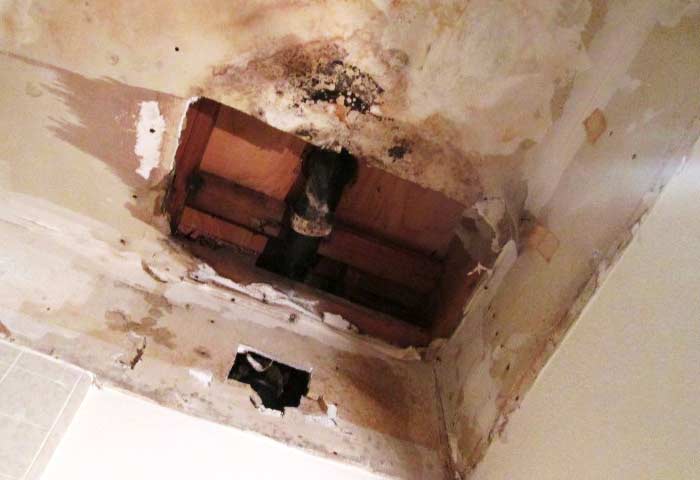Every person is bound to have their personal theory involving Is it safe to flush food (especially rice) down the toilet?.

Intro
Many individuals are commonly confronted with the issue of what to do with food waste, especially when it involves leftovers or scraps. One usual inquiry that arises is whether it's all right to purge food down the bathroom. In this article, we'll look into the reasons why individuals could consider purging food, the repercussions of doing so, and alternative approaches for appropriate disposal.
Reasons individuals may think about flushing food
Lack of awareness
Some people might not recognize the potential harm caused by flushing food down the commode. They might incorrectly believe that it's a safe technique.
Convenience
Flushing food down the bathroom may seem like a quick and very easy remedy to taking care of undesirable scraps, specifically when there's no close-by garbage can offered.
Laziness
In many cases, individuals might simply pick to flush food out of sheer idleness, without thinking about the effects of their actions.
Consequences of flushing food down the bathroom
Ecological impact
Food waste that ends up in waterways can add to air pollution and harm aquatic ecosystems. Furthermore, the water utilized to flush food can strain water resources.
Pipes concerns
Flushing food can bring about clogged up pipelines and drains, causing costly pipes repairs and troubles.
Types of food that ought to not be purged
Coarse foods
Foods with coarse appearances such as celery or corn husks can obtain entangled in pipes and cause obstructions.
Starchy foods
Starchy foods like pasta and rice can soak up water and swell, causing clogs in pipelines.
Oils and fats
Greasy foods like bacon or cooking oils must never ever be flushed down the commode as they can solidify and create blockages.
Proper disposal techniques for food waste
Using a garbage disposal
For homes furnished with waste disposal unit, food scraps can be ground up and purged through the pipes system. However, not all foods are suitable for disposal in this way.
Recycling
Specific food product packaging materials can be recycled, reducing waste and reducing environmental impact.
Composting
Composting is an environmentally friendly method to dispose of food waste. Organic materials can be composted and used to enhance dirt for horticulture.
The value of correct waste management
Minimizing ecological injury
Appropriate waste monitoring techniques, such as composting and recycling, aid minimize contamination and protect natural resources for future generations.
Securing plumbing systems
By staying clear of the method of flushing food down the bathroom, property owners can stop expensive pipes repairs and keep the stability of their plumbing systems.
Conclusion
Finally, while it might be tempting to flush food down the commode for comfort, it's important to recognize the prospective repercussions of this activity. By adopting proper waste administration techniques and taking care of food waste properly, people can add to much healthier pipes systems and a cleaner atmosphere for all.
THINK TWICE BEFORE FLUSHING FOOD DOWN YOUR TOILET IN FALLBROOK CA
Let’s be honest, we’re really supposed to be tossing rotten or leftover food in the compost bin or trash can. But many people like to place scraps of food down the drain of, say, their kitchen sink. That’s why the garbage disposal was invented: so we can continue to place certain foods down the drain without clogging our drain in the process. Smart.
But not all of us have the luxury of having a garbage disposal installed. So, you might continue to shove food down your sink drain anyway – or worse: you might flush them down your toilet! If you’re guilty of doing the latter, you’re going to want to stop, and here’s why:
Toilet Drains Aren’t Designed to Handle Food!
There’s your answer: food just doesn’t belong in your toilet. It may seem like your toilet drain is wider than the drains of your sinks, but truth be told, that isn’t actually the case. The narrower pipes of your toilet leave your plumbing at risk for clogging if you do happen to flush your food. In addition, food doesn’t break down as quickly that toilet paper and human waste do. In turn, this leaves your toilet at risk for a nasty clog.
Although a flush of a tiny pinch of food every now and then isn’t going to completely damage your toilet, there are certain foods that should absolutely not be flushed in your toilet at all. These include starchy foods like mashed potatoes, grains, hard pieces of food that are slow to break down, and fats and oils.
The latter categories of food are particularly problematic as they may harden, expand as they absorb water, break down slowly in your system, or generally create the perfect obstruction with their gelatinous composition. These are all things you don’t want in your plumbing system!
Experiencing a Toilet Clog?
Nobody’s perfect, and we all make mistakes. Sometimes one of the mistakes people make is flushing food down their toilet and later realizing that it wasn’t the best thing to do once they see that their toilet is now clogged. Uh-oh!

I'm very eager about Think Twice Before Flushing Food Down Your Toilet and I really hope you liked my blog entry. Enjoyed reading our article? Please share it. Help someone else locate it. We take joy in your readership.
Maintenance Sign-Up

